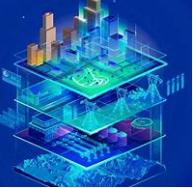Imagine having a perfect digital copy of a physical object, system, or even an entire city—a replica that updates in real-time and can predict future behavior. This is the concept of a digital twin, a technology that’s rapidly transforming industries from manufacturing to healthcare. By creating virtual models that mirror their physical counterparts, digital twins are enabling unprecedented levels of efficiency, innovation, and problem-solving. This article explores how digital twins are reshaping the world and what they mean for the future of technology.
At its core, a digital twin is a dynamic, real-time representation of a physical entity. It’s created using data from sensors, IoT devices, and other sources, which feed into a virtual model that can simulate, predict, and optimize performance. For example, in manufacturing, a digital twin of a production line can monitor equipment, identify inefficiencies, and even predict when a machine is likely to fail. This allows companies to perform maintenance before a breakdown occurs, reducing downtime and saving costs.
The applications of digital twins extend far beyond manufacturing. In healthcare, they’re being used to create personalized models of patients, enabling doctors to simulate treatments and predict outcomes. For instance, a digital twin of a patient’s heart can help cardiologists test different surgical approaches or medications before making decisions. Similarly, digital twins of organs or entire bodies could revolutionize medical research, allowing scientists to conduct experiments in a virtual environment without risking human lives.
Cities are also embracing digital twin technology to become smarter and more sustainable. By creating virtual replicas of urban areas, city planners can simulate the impact of new infrastructure projects, optimize traffic flow, and improve energy efficiency. For example, Singapore has developed a digital twin of its entire city-state, which is used to test policies and plan for future growth. These virtual models are helping cities tackle challenges like population growth, climate change, and resource management in innovative ways.
In the energy sector, digital twins are playing a crucial role in the transition to renewable energy. Wind farms, for instance, use digital twins to monitor turbine performance and optimize energy production. By analyzing data from sensors on each turbine, operators can adjust settings in real-time to maximize efficiency and extend the lifespan of equipment. Similarly, digital twins of power grids are helping utilities balance supply and demand, integrate renewable energy sources, and prevent outages.
The potential of digital twins is also being realized in the world of transportation. Automakers are using digital twins to design and test vehicles in a virtual environment, reducing the need for physical prototypes and speeding up development cycles. In aviation, digital twins of aircraft engines are used to monitor performance and predict maintenance needs, improving safety and reducing costs. Even entire transportation networks, such as railways or shipping routes, can benefit from digital twin technology to optimize logistics and reduce delays.
Despite their immense potential, digital twins also raise important challenges. The vast amounts of data required to create and maintain these virtual models raise concerns about privacy and security. Additionally, the complexity of building and managing digital twins requires significant investment and expertise. Addressing these challenges will require collaboration between industries, governments, and technology providers to ensure that digital twins are used responsibly and effectively.
Digital twins are no longer a futuristic concept—they’re a powerful tool that’s already transforming industries and solving complex problems. From manufacturing and healthcare to cities and energy, their impact is profound and far-reaching. As we continue to explore the possibilities of this technology, the challenge will be to harness its potential responsibly, ensuring that it benefits all of humanity. The digital twin revolution is here, and it’s changing the way we see and interact with the world.
